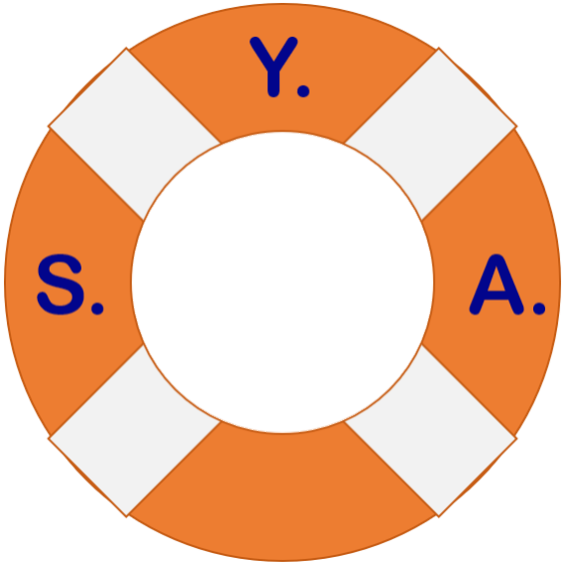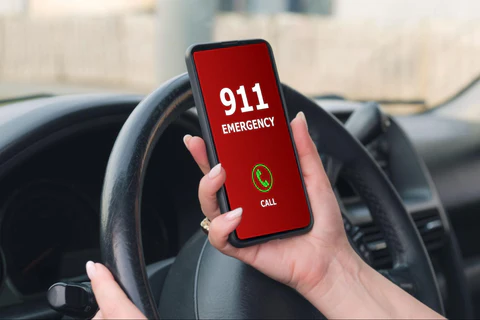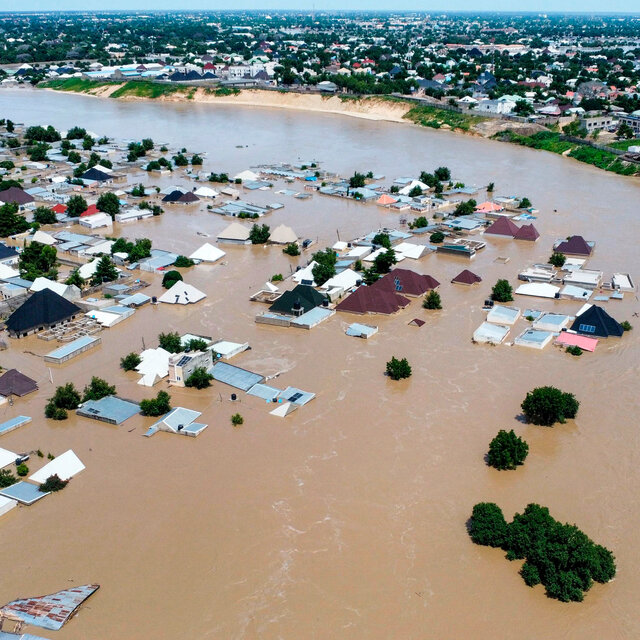Water bottles today are as ubiquitous as air. You would be hard pressed to find someone that didn’t own any. There are so many water bottles available from an unknown number of manufacturers but some are better than others. The most recent trend is in vacuum insulated stainless steel water bottles that keep your drink cold or hot for a day or more.
I was not a believer until I got one as a swag gift from a vendor several years ago when insulated water bottles first hit the market. Since then I’m a convert and have purchased several more for my hiking, camping and backpacking adventures.
Where it started
My original insulated bottles were both swag gifts from a vendor: a thermos and an early vacuum insulated bottle from Cotopaxi.
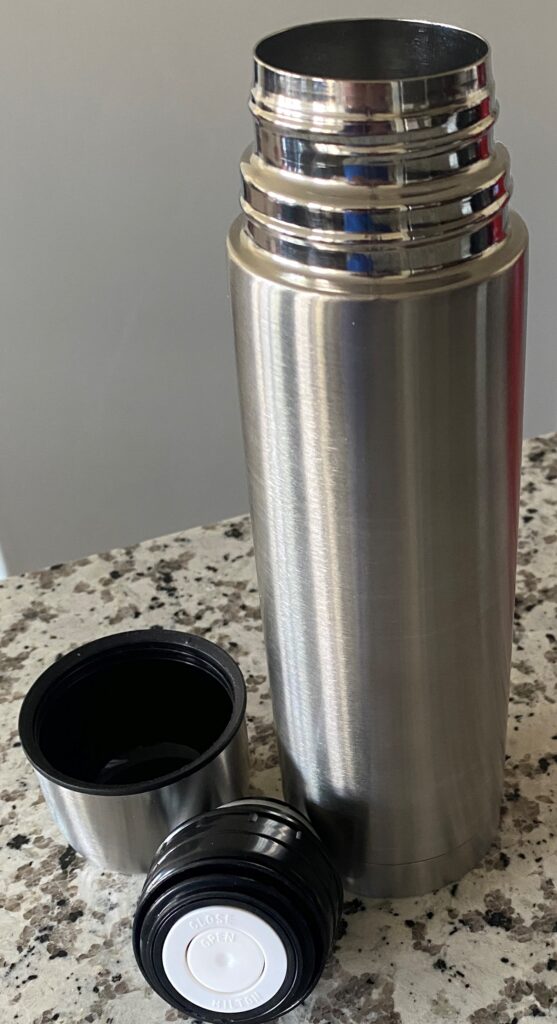
The thermos worked like a thermos should, but it was small only holding 12-16oz of liquid. I only use this for hot coffee or hot water to make tea or instant oatmeal while outdoors.

The Cotopaxi branded bottle holds 17oz or about the same as a standard 16.9oz water bottle. I was pretty skeptical that this thin, lightweight bottle would do anything to keep my drink cold on a hot day. Boy was I wrong. I was building a patio in my backyard in June 2017 and there was no shade from the summer heat. I decided to try this bottle out and I filled it with iced tea and a few ice cubes.
Even though it was sitting in the direct sun for several hours while I worked, when I opened it to take a drink, not only had the ice cubes not fully melted, it really was ice cold and very refreshing.
Fast forward a few years and I have since moved back to Utah and have been spending as much time hiking and camping in the mountains as a global pandemic allows. Last year I made several water bottle purchases.
ThermoFlask and Hydro Flask
The brand I settled on is ThermoFlask. A competing brand you may have or have heard of is Hydro Flask. Both make vacuum insulated stainless steel bottles designed to keep liquids hot for at least 12 hours or cold for 24 hours. While they aren’t the only players in this space, they are the brands that I come across the most. To dig deeper into the science behind vacuum sealed bottles click here. To see how they are made click here.
ThermoFlask just sells bottles and replacement parts whereas Hydro Flask has expanded into a variety of products beyond water bottles including coolers, tumblers, bowls and products specifically aimed at kids.
My Bottles
For my needs I’ve found ThermoFlask to be every bit as good as Hydro Flask at a much lower cost. I have two 24 oz. bottles and two 32 oz. bottles pictured below. The 32 oz. bottles I got on Amazon for $23 each. The two 24 oz. bottles came in a two-pack at Costco for $17. They also sell 14, 18, 40 and 64 ounce sizes in a variety of colors.
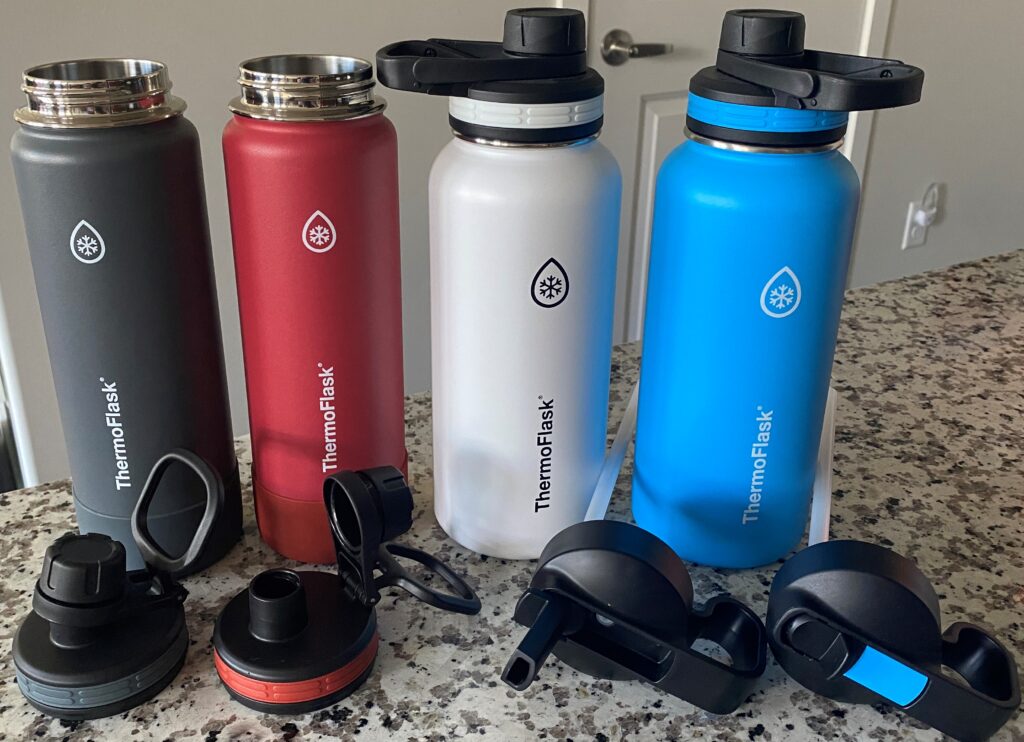
They have 3 different lids: A Chug Lid, Straw Lid, and a Spout Lid.
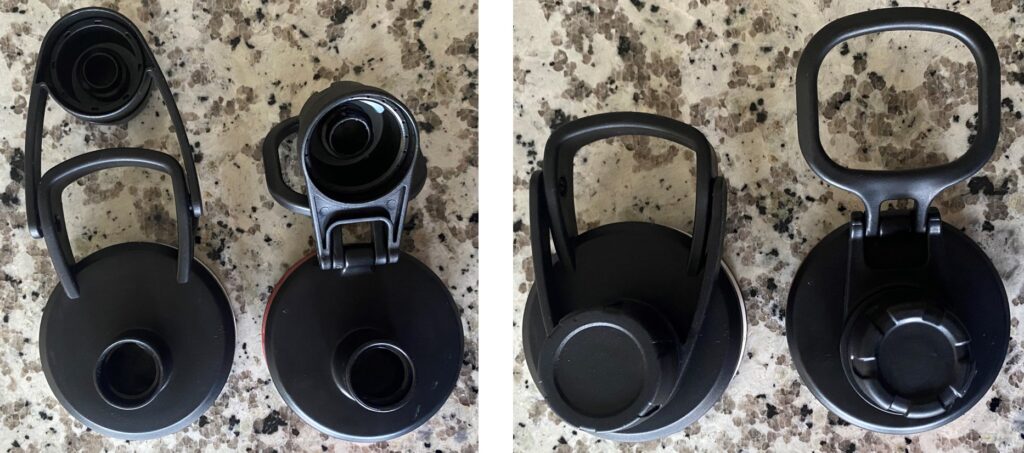
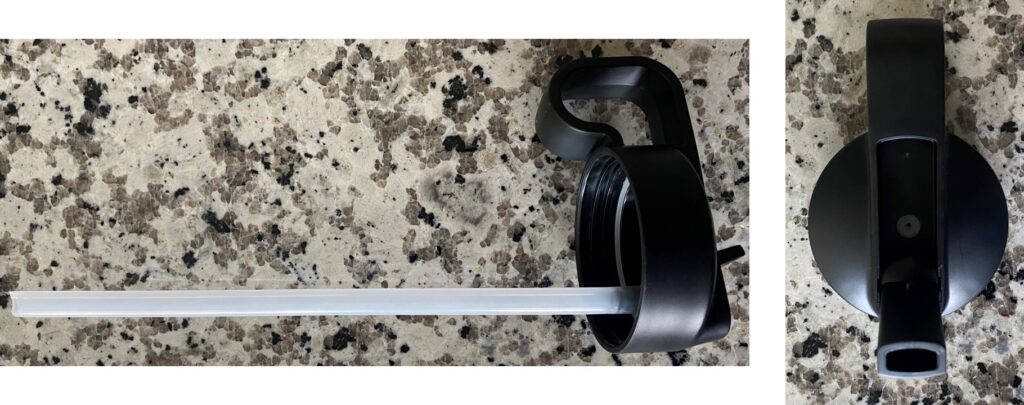
The 32 oz. bottles came with both a Straw lid and a Chug lid but the 24 oz. ones only came with a Spout lid. The great thing about the ThermoFlask bottles is that the lids are interchangeable so I can use whichever handle/grip and spout I want on any of the bottles depending on how I feel or where I’m taking the bottle.
Not all bottles need to be insulated
To be transparent, I also have a tried and true 32 oz. Nalgene bottle. It’s rugged and has proven itself over years of use by outdoor enthusiasts. While you can certainly use insulated bottles exclusively, I don’t find that necessary.

Since it is not insulated, when I go hiking, camping or backpacking, the Nalgene is the first one I use before moving to the ThermoFlask. I put as much ice as the Nalgene can hold and then fill it with water. It manages to stay cold as the ice melts and lasts me the better part of the day. Once it’s used up, I switch to the ThermoFlask which is still ice cold and the ice has barely melted and lasts into the next day.
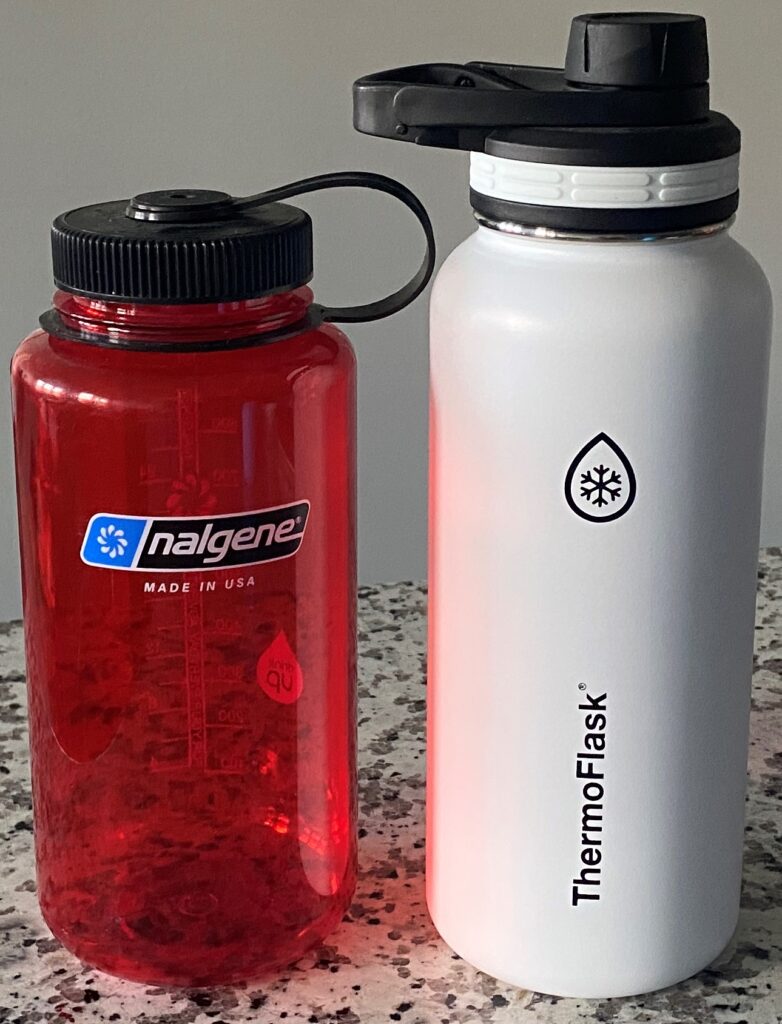
It really stays cold
While I haven’t tested the ThermoFlask with hot liquids yet, I have used it with cold liquids numerous times and they continue to deliver on the promises. The first time I used the ThermoFlask, I only filled it about 1/3 with ice cubes and the rest with water. I hiked all day in 80+ degree temps and had only used my Nalgene on the hike. As I was driving home I broke out the ThermoFlask and I could still hear ice rattling around as I shook the bottle. The water was ice cold and very refreshing after a day hiking in the hot sun.
When I got home, I set it on the counter and left it until the next day. While the ice did melt overnight, there were traces of the cubes still and the water was still very cold and refreshing the next morning. I think if I had put more ice in the bottle before filling it up, it would still have had a decent amount of ice left the next day. Something I plan on testing this summer.
Why so many bottles?
You may be wondering why I need so many bottles. Having several bottles means I don’t have to immediately clean one to use it again. It also gives me enough for visiting friends or family to use while in town.
The 24 oz. is a daily use bottle. Whether sitting around the house, running errands around town, or playing pickleball (look it up, it’s a thing) I use one of these to keep me hydrated. Utah is a very dry climate, and you can get dehydrated very easily.
I use the 32 oz. bottle for hiking, camping and backpacking along with my Nalgene so that I have 64 oz. of water with me and the ThermoFlask ensures I have ice cold water for up to 2 days. During the winter the ThermoFlask ensures that whatever liquid I have in it will not freeze if I’m outside or leave it in the car for a few hours.
So that about sums up my experience with vacuum insulated water bottles. They really do work and I highly recommend them if you spend a lot of time outdoors for whatever reason in any season.
Comments
Let me know what your experience with insulated bottles has been in the comments below.
Last Updated on August 16, 2022
